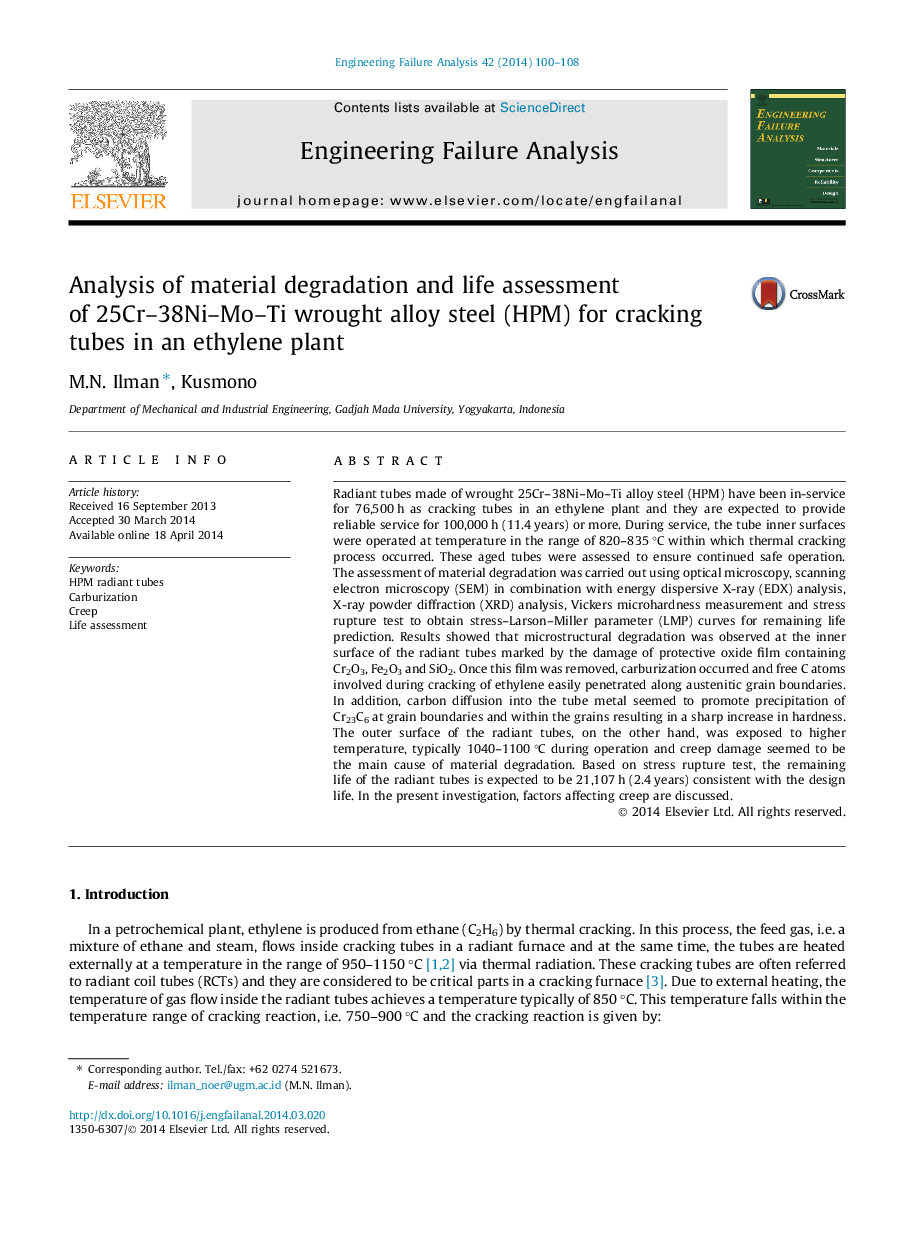| کد مقاله | کد نشریه | سال انتشار | مقاله انگلیسی | نسخه تمام متن |
|---|---|---|---|---|
| 763422 | 1462982 | 2014 | 9 صفحه PDF | دانلود رایگان |

• A wrought 25Cr–38Ni–Mo–Ti alloy steel (HPM) is developed for cracking tubes.
• Carburization and creep are the main factors degrading HPM steel.
• Life assessment can be performed based on stress rupture test.
• The mechanism of microstructural changes and roles of alloying elements are discussed.
Radiant tubes made of wrought 25Cr–38Ni–Mo–Ti alloy steel (HPM) have been in-service for 76,500 h as cracking tubes in an ethylene plant and they are expected to provide reliable service for 100,000 h (11.4 years) or more. During service, the tube inner surfaces were operated at temperature in the range of 820–835 °C within which thermal cracking process occurred. These aged tubes were assessed to ensure continued safe operation. The assessment of material degradation was carried out using optical microscopy, scanning electron microscopy (SEM) in combination with energy dispersive X-ray (EDX) analysis, X-ray powder diffraction (XRD) analysis, Vickers microhardness measurement and stress rupture test to obtain stress–Larson–Miller parameter (LMP) curves for remaining life prediction. Results showed that microstructural degradation was observed at the inner surface of the radiant tubes marked by the damage of protective oxide film containing Cr2O3, Fe2O3 and SiO2. Once this film was removed, carburization occurred and free C atoms involved during cracking of ethylene easily penetrated along austenitic grain boundaries. In addition, carbon diffusion into the tube metal seemed to promote precipitation of Cr23C6 at grain boundaries and within the grains resulting in a sharp increase in hardness. The outer surface of the radiant tubes, on the other hand, was exposed to higher temperature, typically 1040–1100 °C during operation and creep damage seemed to be the main cause of material degradation. Based on stress rupture test, the remaining life of the radiant tubes is expected to be 21,107 h (2.4 years) consistent with the design life. In the present investigation, factors affecting creep are discussed.
Journal: Engineering Failure Analysis - Volume 42, July 2014, Pages 100–108